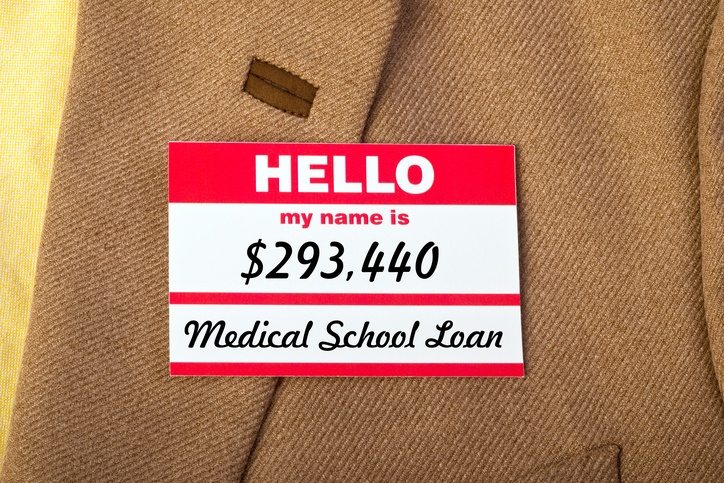5 Ways to Combat Physician Loans

The numbers are staggering.
More than 80 percent of all medical school students graduate with debt, according to the Association of American Medical Colleges. And, it’s not an insignificant amount; the median debt for all indebted medical school graduates in 2015 was $183,000.
That’s a tough sum to swallow after spending 12 to 15 years grinding away in school.
To make matters worse, paying back $183,000 in physician loans at 6 percent interest (which is pretty standard) can cost you about $2,000 a month and take more than 10 years–and include more than $60,000 in interest charges.
Those numbers can seriously cramp your lifestyle and keep you from realizing your financial dreams–especially if you don’t make wise financial decisions. The good news is that you can fight back against these staggering numbers and shorten the length of time it takes to pay down the debt.
Here’s a look at five ways to combat physician loans:
1) Start with a Signing Bonus
Many newly minted medical school graduates have often asked for and received signing bonuses. But, now that the country is in the midst of a physician shortage, the likelihood of receiving a signing bonus is better than ever–and the bonus is likely to be bigger than ever.
So ask.
It can be uncomfortable to ask for a signing bonus, but it’s worth it. According to Becker’s Hospital Review, the average signing bonus for physicians hired during the first half of 2015 (the last year for which figures are available) was more than $21,000. At the end of the day, any amount can help doctors address their physician loans.
2) Pay as You Earn
Many medical school students let their physician loans go into forbearance while they are in residency. Doing this allows the students to postpone making loan payments, but it does not stop interest from accruing.
However, there are programs that allow you to postpone interest capitalization while actually giving you an interest subsidy during the first three years you are making payments on your physician loans.
The income-based repayment program and the Pay As You Earn program both limit your payments to between zero and 10 percent of your overall income.
3) Refinance
It sounds so simple, because it is so simple. It can also save you an incredible amount of money. It’s refinancing, and it’s something you should constantly consider while you are paying back your physician loans.
Of course, refinancing only makes sense if you can lower your interest rate. So the first thing you should do when you graduate from medical school is figure out if refinancing your loan at a lower interest rate makes sense.
4) Find an Under-Served Area
Many states offer loan forgiveness and repayment programs for physicians willing to work in areas that are under-served by health care.
New Hampshire, for example, offers $75,000 toward physician loans to full-time primary care physicians who work in an area of the state that is experiencing a physician shortage for three years.
These programs are great ways for doctors to combat their physicians loans and gain valuable experience.
5) Live Within Your Means
After at least 12 years of education, many new physicians are in a hurry to realize the fruits of their labor. So instead of focusing on reducing their physician loans as quickly as possible, they buy expensive homes, cars and toys–and find themselves in even more debt.
Simply living within your means (and living in an area where the cost of living is low) is actually one of the easiest ways for you to combat your student loan debt.
—
Would you like to read more articles like this one? Subscribe!
![]()
Comments are closed.



Recent Comments